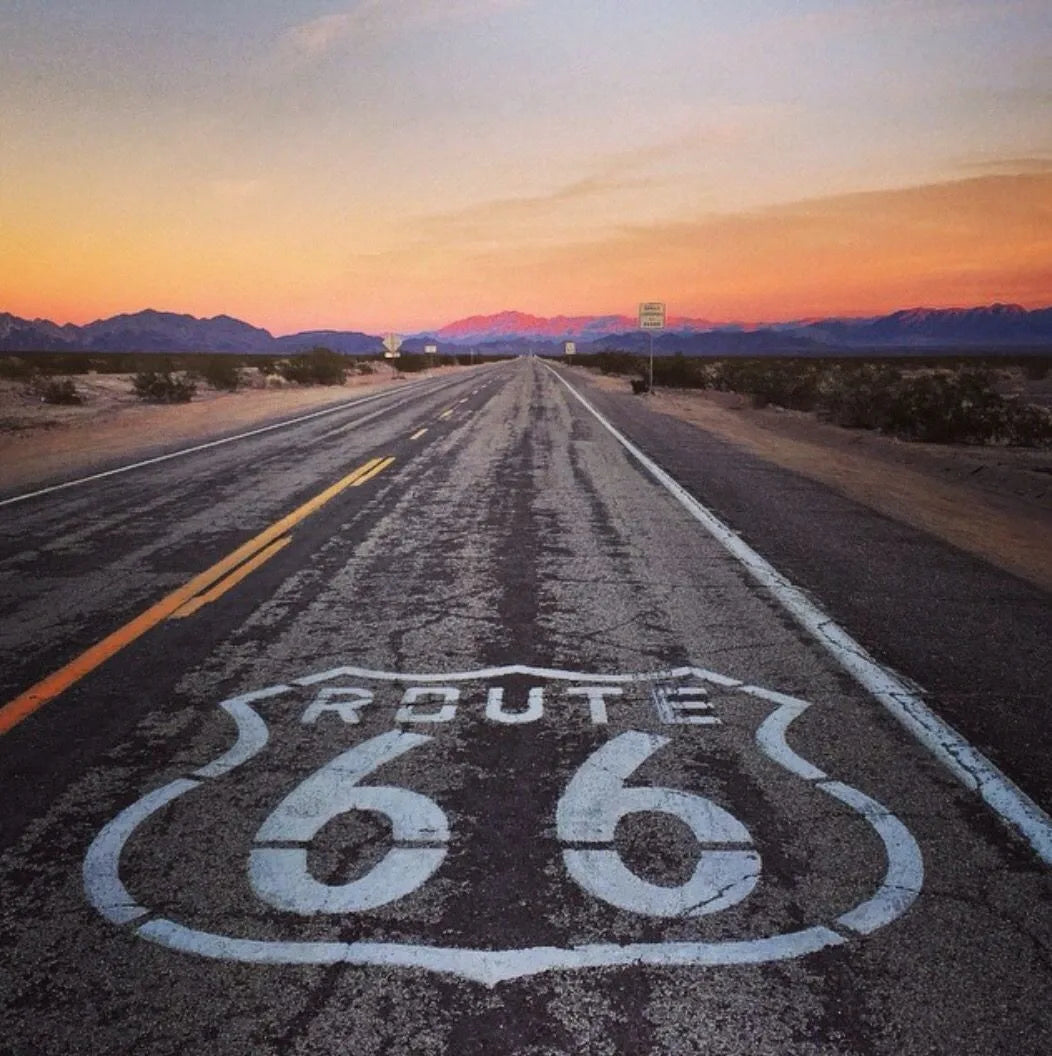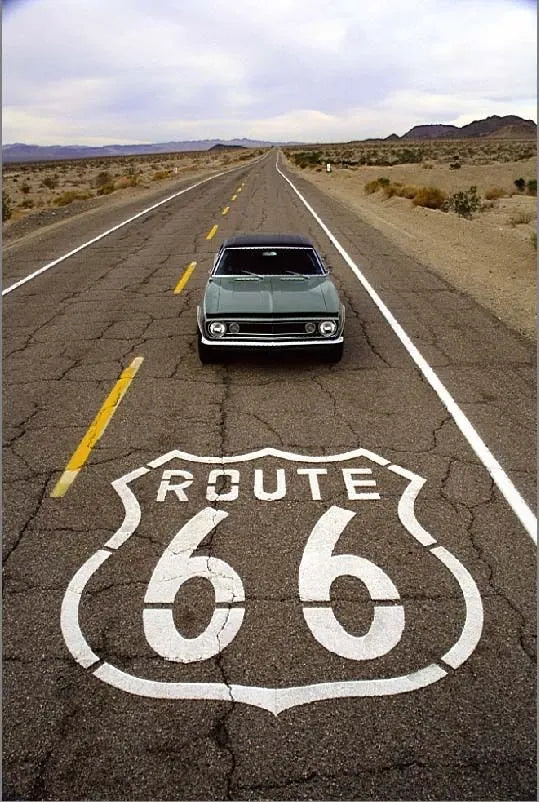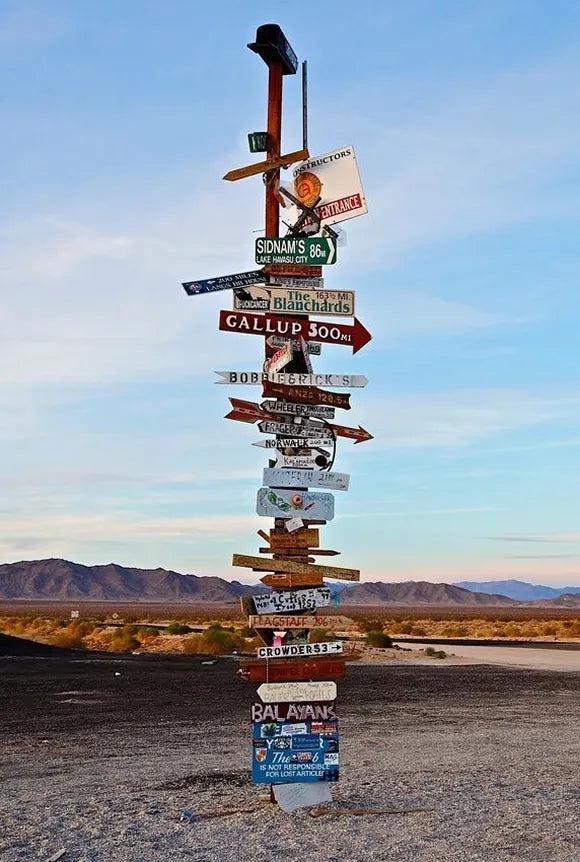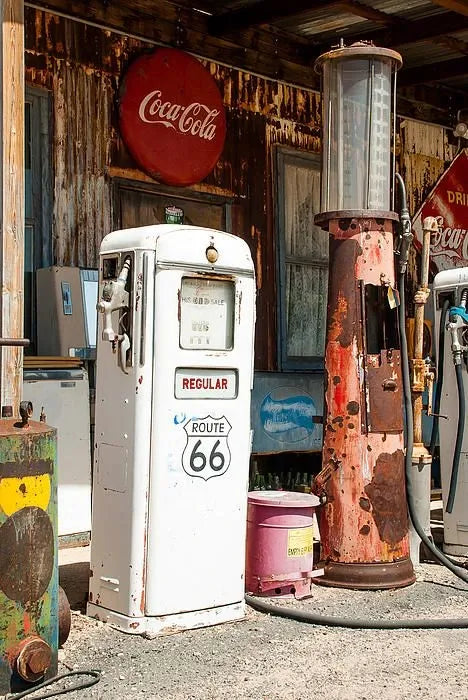More than a road, a line on the map of dreams
Some roads are walked with your feet. Others are lived with your soul. Route 66 belongs to the latter. Inaugurated in 1926, it was for decades the backbone of a country in motion. From Chicago to Santa Monica, this legendary road stretches across eight states and more than 2,400 miles of history, dust, gasoline, and freedom-tinged songs.
Nicknamed The Mother Road, Route 66 didn’t just connect cities on a map — it linked generations, cultures, and dreams on wheels. It became the backdrop for the Dust Bowl exodus, the escape route for soldiers returning from the front, and the favorite highway of writers, photographers, and filmmakers who saw in it a symbol of what it truly meant to be on the road.
From the roar of V8s to the whisper of the wind
Driving Route 66 means hearing the echo of old muscle cars on cracked pavement. It means pulling into abandoned gas stations, neon motels, diners that still serve coffee in heavy ceramic mugs. It’s the feeling of touching a time when the steering wheel was an extension of your body and the journey wasn’t just a transition — it was the destination.
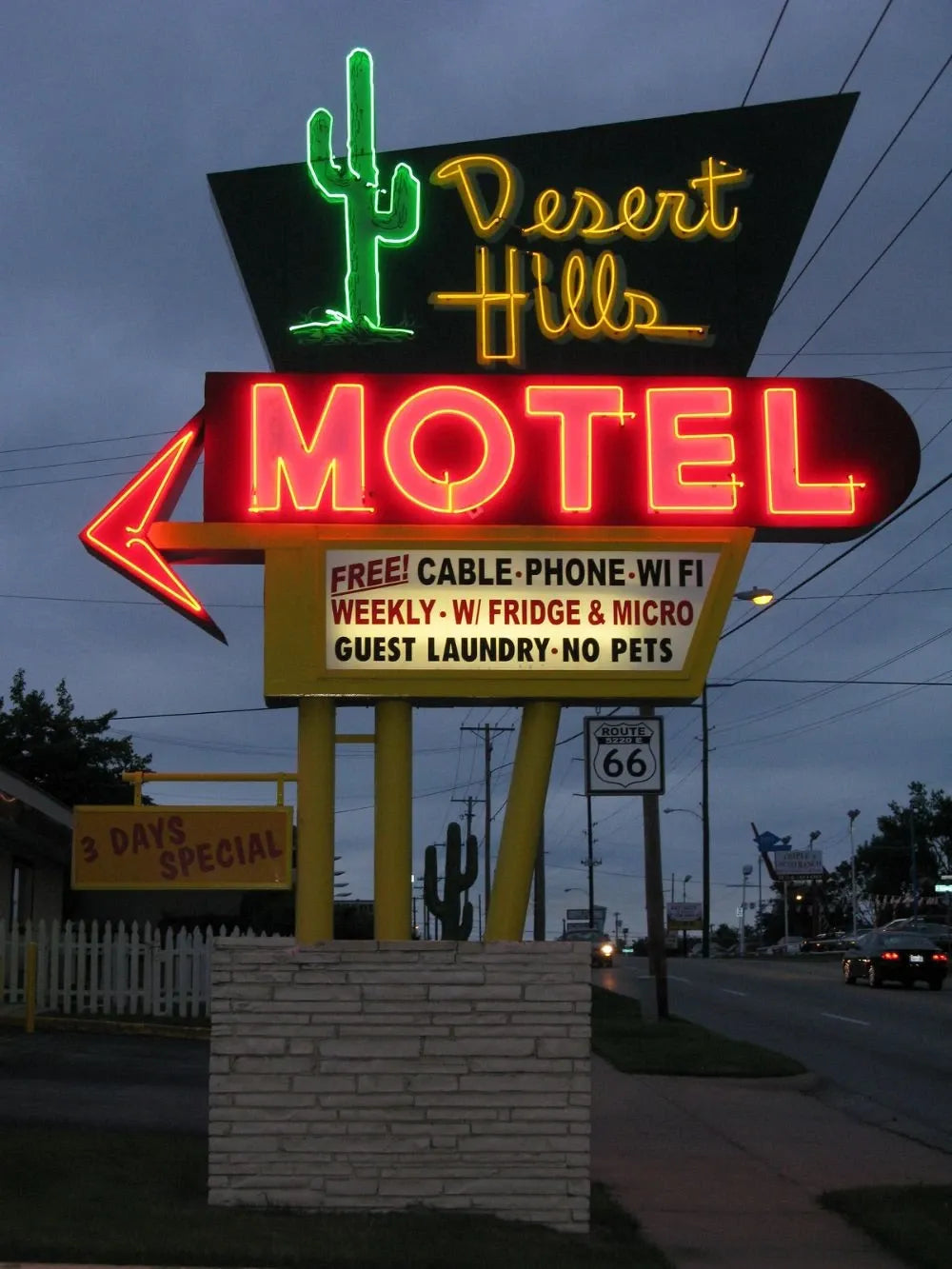
Why do we still fall in love with Route 66?
Because it’s not perfect. It’s broken, uneven, incomplete. You have to leave the GPS behind and follow aged signs and instincts. It demands attention to detail and reverence for the journey. Every stop is a story. Every town, a time capsule.
Places like Seligman, Tucumcari or Amboy feel more like movie sets than actual towns. And yet, there they are — waiting for someone to drive by, stop, and listen. During those midday pauses, with the warm air drifting in through the open windows, a good pair of driving gloves — like the Rascal Deerskin — is more than just comfort: it’s a connection to a more tactile, more mindful way of driving.
The ideal trip: no clocks, windows down
The best way to travel Route 66 is unhurried. Leave room for spontaneity. Stop when something catches your eye. Sleep in historic motels like the Blue Swallow or the Wigwam Motel. Eat at places that haven’t changed their menu in forty years. Pick up a paper map. Pack a weekender bag that collects dust in style.
The route isn’t just linear — it’s emotional. It rises and dips with your thoughts. Moments of euphoria, stillness, reflection. Because the road leads inward, too.
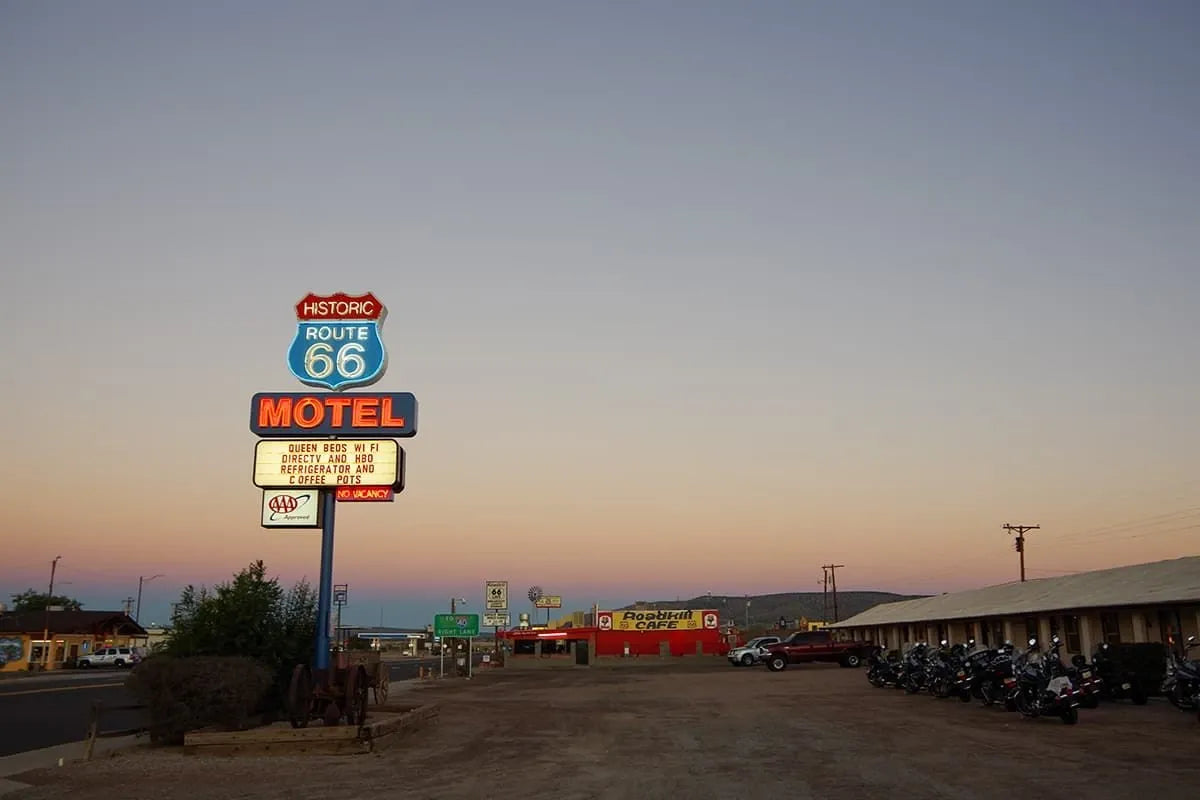
From Chicago to the Pacific: the route, stretch by stretch
Illinois: the beginning. The contrast between city and endless farmland. Original signs and the first restored gas stations.
Missouri and Kansas: deep Americana. Charming towns, old auto parts stores, and iron bridges that still defy rust.
Oklahoma: historic heartland. Museums dedicated to the Route and the great migrations of the 20th century.
Texas: the infinite plain. Endless horizons and skies that look painted.
New Mexico: a change in tone. Earthy colors, Hispanic influence, enchanted towns.
Arizona: the most cinematic stretch. The Petrified Forest, Flagstaff, Seligman… and the Grand Canyon just a short detour away.
California: the golden finale. Roadside fruit stands, L.A. traffic, and Santa Monica Pier as a symbolic finish line.
Route 66: the ultimate experience for driving lovers
Anyone who loves the road knows it’s not just about speed. It’s about ritual — choosing the car, plotting the route, setting the camera, adjusting your gloves, zipping your bag. Route 66 is not a test of endurance, nor a race. It’s a celebration of movement.
In a world that’s accelerating by the day, Route 66 reminds us that time is measured in miles, not minutes. And that sometimes, the most meaningful part of the journey is the moment you stop — somewhere in the middle of the road.
